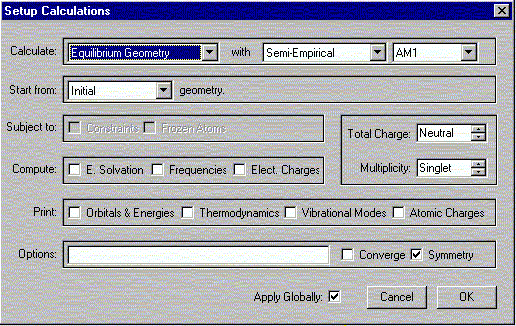
Problem set #2 (Meeting 2)
Announcements
1. You are not allowed to use any readers in the lab starting meeting 2. All information that is needed to carry out the lab should be in your pre-lab report.
2. You will not be permitted to carry any experiments in the future without proper attire! This means if you do not show up in proper clothing or/and do not wear goggles and a lab coat in the lab, you will be excused from the lab with a zero score (lab performance and quiz!) for this lab the first time (this means that you still will have to make up the lab later). The second time, the second time the consequences will be more severe.
ATTN: answers to the below questions are due at the start of meeting 2; these answers should be part of your pre-lab write-up. Show pertinent equations where appropriate.
1. Referring to the benzoin condensation, answer the following questions.
a. Why are water and 95% ethanol both used as solvent in this reaction?
b. What observation does the student make upon addition of the sodium hydroxide solution to the solution above?
c. A student starts off with 0.60 g of thiamine hydrochloride and 4 mL of 0.20 N sodium hydroxide solution. Afterwards, he adds 3.50 mL of benzaldehyde to the solution. After the work-up, he isolates 3.30 g of white crystals. Determine the yield for the reaction. Show your calculations.
2. Vacuum filtration
Please watch the following video (MP4-format) and then take the quiz below.
Online Quiz
http://bacher.chem.ucla.edu/TakeQuiz/?id=c9f0f895fb98ab9159f51fd0297e236d
To log in, use your last name and your student ID. If you are experiencing problems, contact the instructor via email and include your full name (indicated which one is your last name), your student ID and which section you are enrolled. (Hint: In some cases more than one answer is correct!) The quiz has to be taken until one hour prior to meeting 3 of your section. It is worth 10 points. After you submit the answers, your score should appear on your screen. If this does not happen, inform the instructor immediately (There will not be any possibility to retake the quiz weeks later!).
3. Referring to the elimination reaction, answer the following questions.
a. Why is important that the first distillation is conducted slowly? Which compound(s) distill over if the distillation is performed properly?
b. The residue in the conical vial usually assumes various (mostly very intense) colors. What does this residue consist of and where do these colors originate from?
c. How are the organic and the aqueous layer (sodium chloride solution) separated during the workup?
d. Why does the sodium sulfate have to be removed prior to the second distillation?
e. Why do cyclohexene and cyclohexanol exhibit significantly different boiling points?
f. One of qualitative tests that is performed to verify the presence of an C-C double bond is the reaction with potassium permanganate. Show the pertinent chemical equation (including proper stereochemistry). What does the student observe in this reaction?
4. Infrared Spectroscopy
a. How is the IR spectrum for the final product of the elimination reaction obtained in the lab? Outline a brief procedure.
b. A student isolates a colorless liquid, which appears to have a high surface tension. The IR spectrum exbibits only four peaks that are really broad. What did he isolate?
5. a. Using PC Spartan 2002, perform the following calculations for the alkenes: terpinolene, limonene, a-terpinene, isoterpinolene. Make sure that all hydrogen atoms are present and there are also no extra ones either.
b. Select Calculations from the Setup menu.

The following window should appear. Select the options shown.

Verify that the Charge is Neutral and Multiplicity is Singlet. Click OK.
Select Submit from Setup menu.

Then click OK to exit dialog. Close the previous window.
Select Submit from Setup menu. When the calculation is completed you will be notified. It should not take more than one minute for the calculation to complete under normal circumstances. Make sure that you have only one window open at this point. The messages are usually displayed in the first window, and often not in the window you are working in at this point.
Under the Display menu, select Properties. Record the value for the Energy.

Analysis:
1. Based in the observed trends in trends in the heat of formation (=energy), which alkene is the most stable and which one is the least stable one? Can you rationalize these observations? Do the obtained data match with the expectation? If not, what is the conclusion?
2. Can you explain the product distribution observed for the elimination of water from a-terpinol (see reader)?
Problems with calculations: Check here